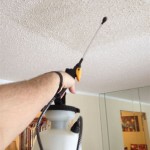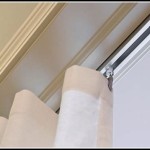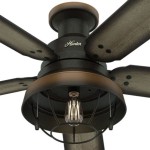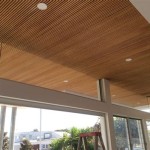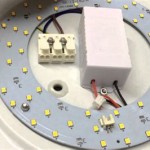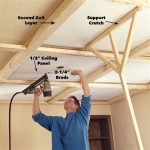How To Cut Crown Molding on a Cathedral Ceiling
Installing crown molding can significantly enhance the aesthetic appeal of any room. When dealing with a cathedral ceiling, however, the process becomes more complex than installing crown molding on a standard 90-degree wall. The angles involved are rarely straightforward, and precise cuts are crucial to achieving a seamless and professional finish. This article provides a comprehensive guide to cutting crown molding for a cathedral ceiling, focusing on the techniques and understanding required to achieve accurate and visually pleasing results.
Before embarking on the project, several prerequisites must be addressed. First, accurately measure the angles of the cathedral ceiling. Second, determine the spring angle of the crown molding being used. Third, select the appropriate cutting method. Finally, practice cutting on scrap pieces before committing to the actual molding.
Understanding the Angles Involved
The most critical aspect of cutting crown molding for a cathedral ceiling is understanding the angles involved. Unlike standard rooms with 90-degree corners, cathedral ceilings present varying angles that must be precisely measured and accounted for. The two primary angles to consider are the wall angle and the spring angle of the crown molding itself.
Measuring the Wall Angle: The wall angle is the angle formed at the intersection of the two walls where the crown molding will be installed. This angle can be measured using a protractor, angle finder, or, more accurately, a digital angle finder. A digital angle finder provides a numerical readout, minimizing the possibility of errors associated with manual measurements. To measure the angle, place the angle finder against each wall, ensuring it is flush against the surfaces. The angle finder will display the total angle of the corner. Divide this total angle by two to determine the miter angle for each piece of crown molding.
For example, if the total angle measured is 130 degrees, dividing by two results in 65 degrees. This means each piece of crown molding must be cut at a 65-degree angle. However, this is just the start. The miter angle needs to be adjusted further based on the spring angle of the crown molding, as discussed below.
Determining the Spring Angle: The spring angle refers to the angle at which the crown molding sits against the wall and ceiling. This angle is determined by the design and profile of the crown molding itself. Crown molding typically has a spring angle of 45 degrees or 52 degrees, though other angles are possible. The manufacturer’s specifications will usually provide the spring angle. If this information is not readily available, a simple test can determine the spring angle. Place the crown molding against a wall with the back edges touching both the wall and ceiling. Use a protractor to measure the angle between the wall and the bottom edge of the molding. This measurement represents the spring angle.
Understanding both the wall angle and the spring angle is crucial for calculating the precise miter and bevel angles needed for accurate cuts. These angles will differ depending on whether it's an inside or outside corner, which leads to varying cut setups.
Calculating Miter and Bevel Angles
Once the wall angle and spring angle are known, the next step involves calculating the required miter and bevel angles for the crown molding. This is often the most challenging part of the process, but accurate calculations are essential for achieving a professional-looking installation. Various methods can be employed to determine these angles, including using trigonometric formulas, online calculators, or specialized miter saw protractors.
Using Trigonometric Formulas: Trigonometric formulas provide a mathematical approach to calculating the miter and bevel angles. These formulas use the wall angle and spring angle as inputs to derive the necessary angles for the saw. While accurate, this method requires a solid understanding of trigonometry and can be time-consuming.
The formulas are as follows:
Miter Angle = arcsin(cos(corner angle / 2) / cos(spring angle))
Bevel Angle = arctan(sin(corner angle / 2) / cos(spring angle))
These formulas are complex and require a scientific calculator for accurate results. It is essential to double-check the calculations to avoid errors which can lead to inaccurate cuts.
Utilizing Online Calculators: Several online crown molding calculators are available that simplify the angle calculation process. These calculators require the user to input the wall angle and spring angle, and they automatically calculate the miter and bevel angles. These calculators often provide visual representations of the cuts, making the process more intuitive. Examples of such calculators can be found on woodworking websites and online hardware stores.
These calculators are a convenient option for those who are not comfortable with trigonometric formulas or prefer a faster, more user-friendly approach.
Employing Miter Saw Protractors: Miter saw protractors are specialized tools designed specifically for determining the miter and bevel angles for crown molding. These protractors typically consist of two adjustable arms that are aligned with the walls of the corner. The protractor then displays the miter and bevel angles directly, eliminating the need for manual calculations. The protractor often shows the direction of the cut as well, preventing confusion to which side of the molding is being cut.
These tools are particularly useful for complex angles and can significantly reduce the risk of errors. However, it is important to ensure the protractor is properly calibrated and used correctly to obtain accurate measurements.
Regardless of the method used, it is crucial to double-check the calculated angles before cutting the crown molding. Errors in calculation can lead to wasted material and a less-than-perfect finish.
Cutting Techniques and Saw Setup
Once the miter and bevel angles have been determined, the next step is to set up the miter saw and make the cuts. The most common method for cutting crown molding is using a compound miter saw, which allows for both miter and bevel cuts to be made simultaneously. Proper saw setup and cutting techniques are essential for achieving accurate and clean cuts.
Saw Setup: Adjust the miter saw to the calculated miter and bevel angles. Most compound miter saws have scales and indicators that allow for precise angle adjustments. Ensure that the saw blade is sharp and in good condition. A dull blade can cause splintering and tear-out, resulting in a poor-quality cut. If necessary, replace the blade with a new one or have it sharpened.
Consider using a stop block to ensure consistent cuts when cutting multiple pieces of crown molding to the same length. A stop block is a piece of wood clamped to the saw table that the molding rests against, ensuring that each piece is cut to the same dimension.
Cutting Techniques: There are two primary methods for cutting crown molding: the flat cutting method and the nested cutting method. The flat cutting method involves laying the crown molding flat on the saw table, while the nested cutting method involves holding the crown molding in the position it will be installed, against the fence and table of the saw.
The nested cutting method is generally considered to be more accurate, as it replicates the installed position of the crown molding. To use this method, hold the crown molding against the fence and table of the saw, ensuring that the back edges are flush against the surfaces. Adjust the miter and bevel angles as calculated, and make the cut. Be sure to maintain a firm grip on the crown molding to prevent it from slipping during the cut.
The flat cutting method is easier to set up, but requires a more accurate understanding of the geometry involved. Using this method requires correctly interpreting the calculated miter and bevel angle. The advantage is that the molding is stable during the cut.
Regardless of the cutting method used, always wear safety glasses and ear protection when operating a miter saw. Also, it's always best to make relief cuts in the back of the molding. To keep it from splintering or breaking in the miter saw, it is also best practice to make a scoring cut before finishing the through cut
Dry Fitting: Before permanently installing the cut pieces of crown molding, it is crucial to perform a dry fit. This involves placing the cut pieces in their intended positions to check for fit and alignment. If any adjustments are needed, make them before applying adhesive or fasteners. Ensure that the joints are tight and that the crown molding sits flush against the wall and ceiling. Adjustments may involve slightly altering the miter or bevel angle, or trimming the length of the crown molding. Careful dry fitting can prevent costly mistakes and ensure a professional-looking installation.
Cutting crown molding for a cathedral ceiling requires precision and patience. By understanding the angles involved, accurately calculating the miter and bevel angles, and employing proper cutting techniques, one can achieve a seamless and visually appealing result. Taking the time to practice on scrap pieces and carefully dry fitting the cut pieces before installation can prevent costly mistakes and ensure a professional finish.

Install Crown Molding Cathedral Vaulted Ceiling

How To Cut A Vaulted Sloped Cathedral Up Crown Molding Corner The Easy Way With Creative

Installing Crown Molding Around A Cathedral Ceiling Fine Homebuilding
Running Crown On Cathedral Ceilings Jlc

How To Install Crown Molding On A Vaulted Cathedral Ceiling Without Transition Piece

Diy Crown Molding For Vaulted Ceilings Easy Cut Install Paul Ricalde

How To Install Crown Molding On Vaulted Or Cathedral Ceilings The Joy Of Moldings

How To Install Crown Molding On Vaulted Or Cathedral Ceilings The Joy Of Moldings

Crown Molded On Sloped Ceiling

Installing Crown Moulding Part Two Canadian Woodworking
Related Posts


